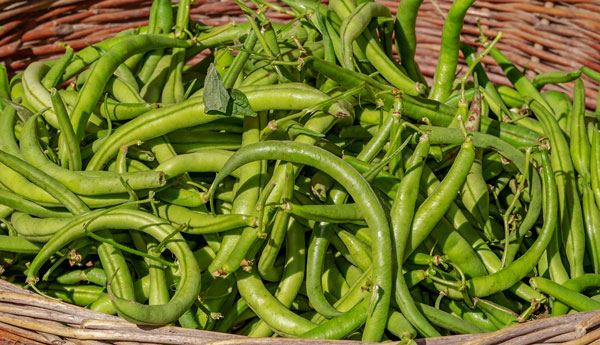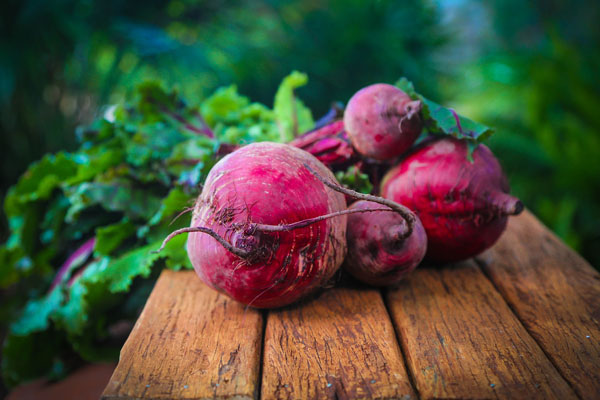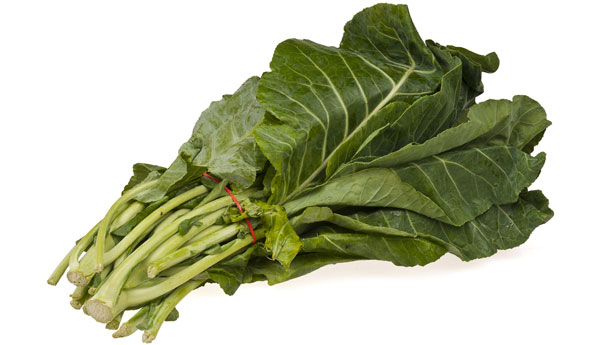
Now midway through July, lets take a look at how that summer heat is affecting the contents of our gardens. Here are a few tips on what to harvest, plant, and more in this most patriotic–but also hottest–of the summer months.
Asparagus
Asparagus takes a long time to mature–think about three years. Thus its going to be a while before any asparagus you may have planted in May is going to be ready to harvest. This doesn’t mean you just leave them be until then, however! In July, the asparagus you planted 10-odd weeks ago is building its roots for next year’s crop. Help them along by side dressing the rows! Scatter some fertilizer down both sides of your asparagus row/trench, making sure to keep it off the stems. Then pull another two inches of soil in around the base of the plants, to further keep the roots cool and nourished. You can also side dress established asparagus beds, as it will help them rebuild their roots for next season.

Beans
It seems like I mention beans every month, but there’s a reason for that. Beans are hardy mass producers, and that remains true in July. Pick your beans every three-odd days to keep them from toughening. The longer a bean stays on the bush, the chewier it gets. If you’re having a rainy summer, also make sure your bushes are dry, as anthracnose spreads easier between damp plants.
If you want more beans, guess what? You can plant some in July as well. In fact, these will be ready sometime in September, meaning they will be the most tender of your crop (late-season beans always are, don’t ask me why). Cover seeds with two full inches of soil to protect them from the summer heat.

Beets
Your beet harvest should be all done in early July, and replaced by the crop you’ll harvest in the fall. To remind, beets are sewn in inch-deep furrows, six-inches apart, with seeds spaced at inch-wide intervals. For more on beet planting, check out Proper Plantings for April: Part 1.

Broccoli
While you may have harvested the main broccoli heads in June (and if you haven’t, get on it!), now is time to start the bonus harvest! Yes, you heard me right, from now until the onset of freezing weather, your broccoli plants will begin sending up bonus shoots. As long as you don’t cut them right on the main trunk, these are perfectly fine to harvest, and make a tender and tasty addition to salads or steak dinners.
If you’d like to plant more broccoli, fertilize the soil and spread about two inches of compost on top, before digging the whole mixture in about 10 inches. Once done, you can sow in more broccoli seeds at around 27-inch intervals, to a depth of about an inch and a half. If you’re wondering about the wider than normal intervals, its because the previous crop of broccoli has already robbed the soil of many nutrients, meaning it will be able to support less plants.

Collards
With a long growing season, July is the perfect month to plant collard greens (unless you live in the Deep South, in which case you should wait until late summer or early fall). Sound a little backwards? Thats because collards, oddly enough, are tastiest after a frost, so they must survive until then. Sprinkle a few seeds into the bed, and give them about two weeks of growth before digging up the seedlings. From there, set out garden rows and set the seedlings in at three-inch intervals. Sounds a little close? Don’t worry. We’ll be thinning them to 21 inches next month.
But for now, have a happy July. Enjoy your garden, stay cool in that heat, and may the bugs leave you and your precious greens well alone.
A humble homesteader based in an undisclosed location, Lars Drecker splits his time between tending his little slice of self-sustaining heaven, and bothering his neighbors to do his work for him. This is mainly the fault of a debilitating predilection for fishing, hunting, camping and all other things outdoors. When not engaged in any of the above activities, you can normally find him broken down on the side of the road, in some piece of junk he just “fixed-up.”

Mansa Dumbre says
Hey Lars! You forgot Malabar spinach (red stem or white stem – white stem has larger leaves but is not as tasty) which resists heat all summer long and gives a great green for salads and stir frys. And how about Amaranth (African Spinach) which resists the summer heat and does not need as much water as the Malabar spinaches or the Chards, some of which are equally resistant to the torrid summers even here in South Florida.
Gerry says
Great info but why can’t you tell us what growing area you are in. I’m in 8 and it’s hot as H**l here. So if you are up north none of this would be much interest to me.
Thanks
Aunt gerry
Tim Jones says
This is great info, particularly since we are trying our hand at asparagus! Thanks.